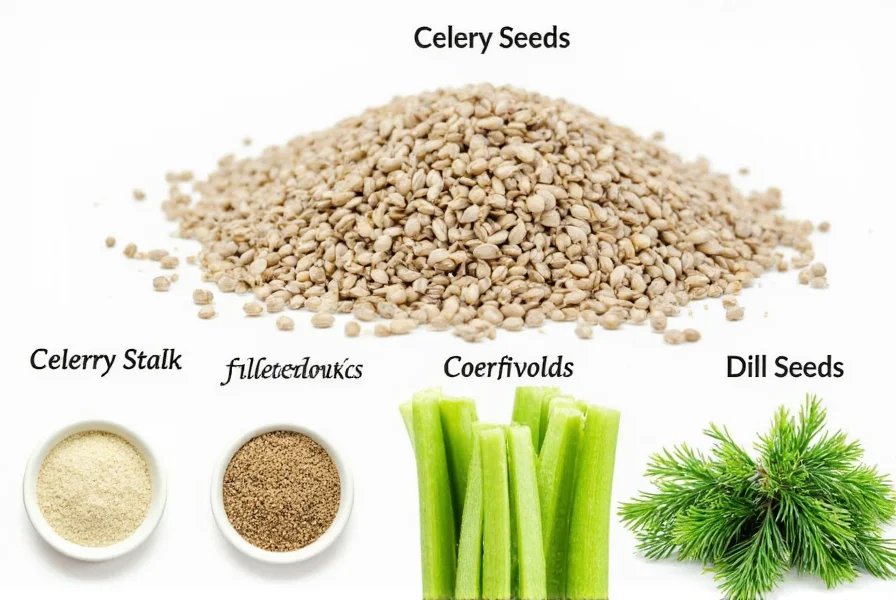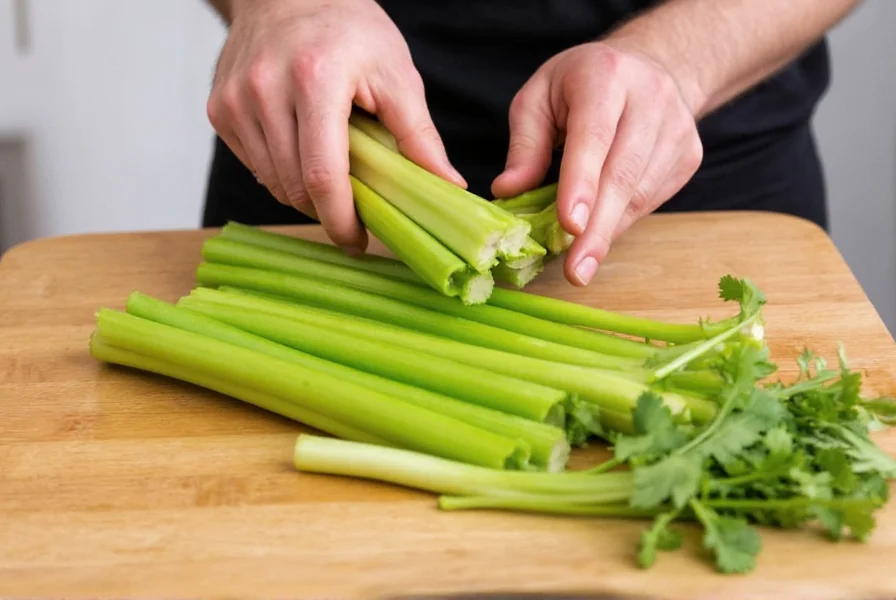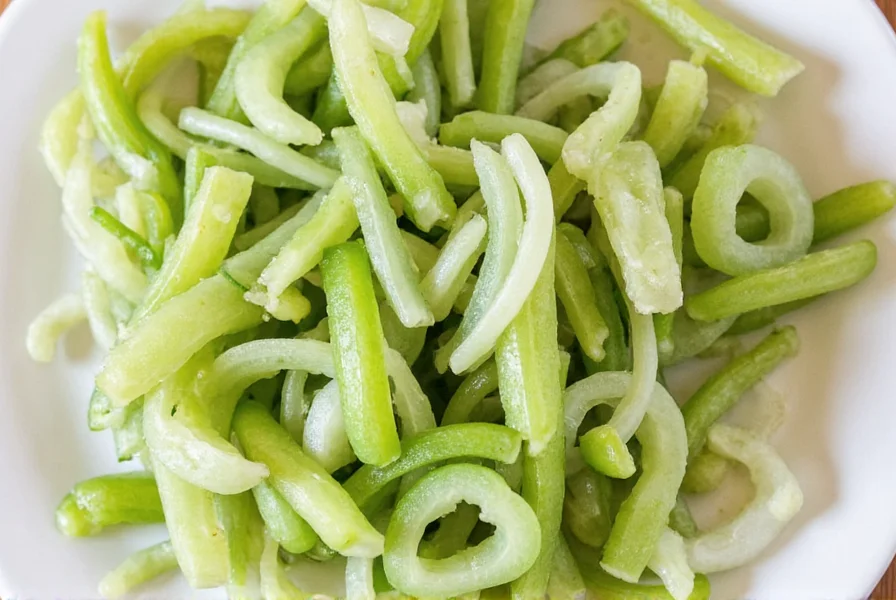When your recipe calls for celery seed but your spice rack is empty, knowing the right substitute can save your dish. Celery seed has a distinctive, slightly bitter, herbaceous flavor that's essential in many recipes from soups to pickling brines. Understanding your substitution options ensures your cooking maintains the intended flavor profile without compromising quality.
Understanding Celery Seed and Its Unique Flavor
Celery seed comes from the seeds of the celery plant (Apium graveolens) and packs a more concentrated flavor than the stalks or leaves. This spice features earthy, slightly peppery notes with hints of parsley and lemon. Its distinctive taste makes it challenging to replace perfectly, but several alternatives work well depending on your specific recipe requirements and what's available in your pantry.

Top Celery Seed Substitutes Ranked by Effectiveness
Not all substitutes work equally well in every situation. The best alternative depends on your recipe type, dietary needs, and flavor preferences. Here's a comprehensive comparison of your options:
| Substitute | Ratio (vs Celery Seed) | Best For | Flavor Notes | Limitations |
|---|---|---|---|---|
| Celery salt | 1/4 tsp per 1/2 tsp celery seed | Soups, stews, dressings | Salty, concentrated celery flavor | Increases sodium content |
| Fresh celery | 2-3 stalks per 1/2 tsp celery seed | Braises, stocks, slow-cooked dishes | Milder, vegetal flavor | Changes texture, less concentrated |
| Lovage | 1/2 tsp dried per 1/2 tsp celery seed | Pickling, potato salad, fish dishes | Stronger celery flavor, slightly medicinal | Can overpower if overused |
| Dill seed | 1:1 replacement | Pickling, canning, breads | Similar earthiness with anise notes | Different flavor profile |
| Celery leaves | 1 tbsp chopped per 1/2 tsp celery seed | Soups, stews, salads | Milder, grassy flavor | Less intense flavor impact |
Detailed Guide to Each Celery Seed Alternative
Celery Salt: The Most Direct Replacement
When you need a celery seed substitute for soup or salad dressing, celery salt provides the closest flavor match. This combination of ground celery seed and salt delivers both the distinctive taste and seasoning your recipe requires. For every 1/2 teaspoon of celery seed called for, use 1/4 teaspoon of celery salt. Remember to reduce additional salt in your recipe accordingly to prevent oversalting. This celery seed replacement works particularly well in broths, potato salads, and creamy dressings where the salt content enhances overall flavor balance.
Fresh Celery: For Texture and Milder Flavor
When substituting fresh celery for celery seed in recipes requiring texture, mince 2-3 stalks to replace 1/2 teaspoon of celery seed. The white base provides more concentrated flavor than the green leaves. This celery seed alternative works best in slow-cooked dishes where the celery can break down and infuse the entire dish. For immediate flavor impact in cold dishes like tuna salad, finely chop the celery to distribute flavor evenly. This approach serves as an excellent celery seed substitute for canning when you want to maintain vegetable texture in your final product.

Lovage: The Professional Chef's Secret
Lovage offers a more intense celery flavor that professional chefs often use as a celery seed substitute for pickling. Use dried lovage in a 1:1 ratio with celery seed, but start with half the amount and adjust to taste. This herb works exceptionally well in brines for pickled vegetables, adding complexity without overwhelming the final product. When using lovage as a celery seed replacement in bread recipes, remember its stronger flavor means you'll need less than the recipe specifies for celery seed. Gardeners who grow lovage appreciate its perennial nature and how a small patch provides years of celery-like seasoning.
Dill Seed: The Pickling Specialist
For canning and pickling applications, dill seed makes an excellent celery seed substitute measurements closely follow a 1:1 ratio. Both seeds come from the Apiaceae family, sharing similar earthy characteristics with dill adding subtle anise notes. This substitution works particularly well in bread and butter pickles or when making relish. If you're looking for a celery seed alternative for celery allergy concerns, dill seed provides a similar texture without triggering celery sensitivities. The flavor difference is noticeable but complementary in most preserved foods.
When to Choose Specific Substitutes
Understanding which celery seed replacement works best for your specific application ensures recipe success. For baking applications like bread or crackers, celery salt provides the necessary flavor concentration without altering moisture content. In liquid-based recipes such as soups and stews, fresh celery or celery leaves work well as they infuse flavor throughout the cooking process. When creating pickling solutions or canning recipes, dill seed or lovage deliver the required preservation qualities while maintaining appropriate flavor profiles.
For those with celery allergies seeking a celery seed alternative for celery allergy management, consider fennel seed which offers a similar licorice note without the allergen. Use 3/4 teaspoon fennel seed per 1/2 teaspoon celery seed, adjusting to taste. This substitution works particularly well in Mediterranean dishes where the flavor profiles complement each other.
Avoiding Common Substitution Mistakes
Many home cooks make critical errors when replacing celery seed. Never substitute celery seed with celery powder at a 1:1 ratio - celery powder is significantly more concentrated. Start with 1/4 teaspoon celery powder per 1/2 teaspoon celery seed and adjust carefully. Avoid using celery seed substitutes in delicate dishes like custards or light sauces where flavor balance is critical. When substituting in bread recipes, remember that wet ingredients like fresh celery will affect dough hydration, requiring minor adjustments to flour content.
Storing Your Substitute Ingredients
Proper storage maintains the potency of your celery seed alternatives. Keep dried substitutes like celery salt and lovage in airtight containers away from light and heat. Fresh celery stalks last up to two weeks when stored upright in water in the refrigerator. For long-term storage of celery seed substitutes, freeze chopped celery in ice cube trays with water or oil for easy portioning in future recipes. Dried herbs maintain peak flavor for 6-12 months when stored properly, while seeds like dill and fennel remain potent for up to two years.
Frequently Asked Questions
Can I use celery salt instead of celery seed in pickling recipes?
Yes, but adjust carefully. Use 1/4 teaspoon celery salt for every 1/2 teaspoon celery seed called for, and reduce additional salt in your brine by 1/8 teaspoon. The salt content in celery salt affects the preservation process, so precise measurement ensures proper pickling results without oversalting.
What's the best celery seed substitute for someone with a celery allergy?
Fennel seed makes the safest celery seed alternative for celery allergy concerns. Use 3/4 teaspoon fennel seed per 1/2 teaspoon celery seed, as it provides similar earthy notes without triggering celery sensitivities. For pickling applications, dill seed works well as it comes from a different plant family while offering comparable texture and preservation qualities.
How do I substitute fresh celery for celery seed in bread recipes?
When using fresh celery as a celery seed replacement in bread, finely mince 2-3 stalks to replace 1/2 teaspoon celery seed. Reduce other liquid ingredients by 1-2 tablespoons to compensate for the added moisture. For best results, sauté the minced celery first to concentrate flavor and reduce water content before incorporating into your dough.
Is dill seed a good substitute for celery seed in canning?
Yes, dill seed serves as an excellent celery seed substitute for canning. Use it in a 1:1 ratio as both seeds come from the Apiaceae family and share similar preservation properties. Dill seed works particularly well in bread and butter pickles, adding complementary flavor notes while maintaining proper acidity levels for safe canning.











 浙公网安备
33010002000092号
浙公网安备
33010002000092号 浙B2-20120091-4
浙B2-20120091-4